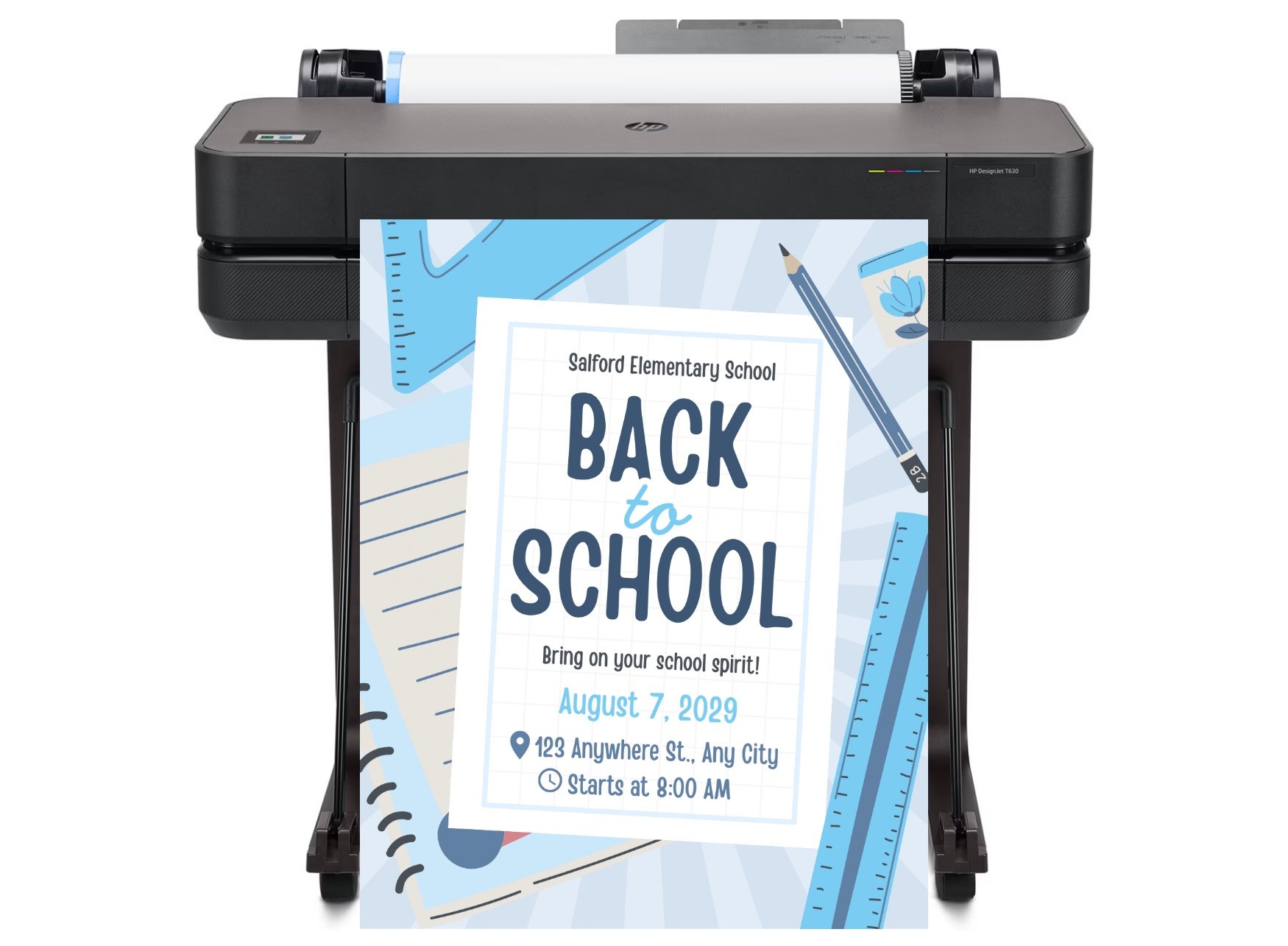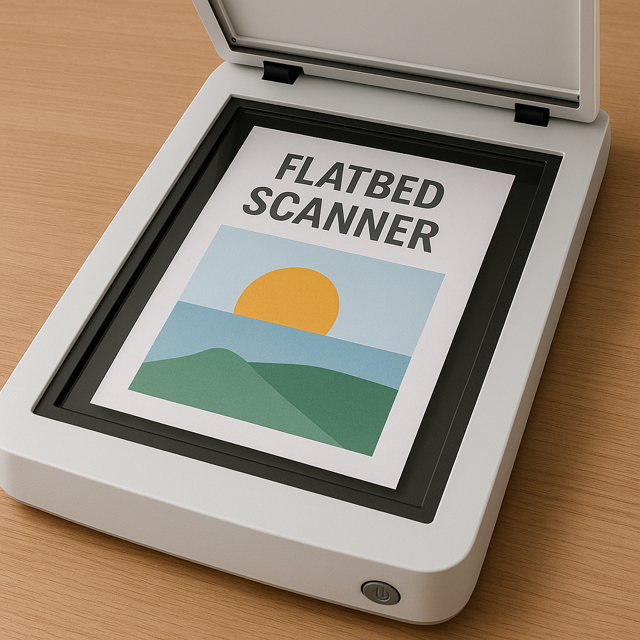
DISCOUNTED EDUCATION PRICING! CALL 1-877-891-8411. We Gladly Accept School Purchase Orders!

In today’s fast-paced digital world—where mobile phones double as cameras, cloud apps offer instant uploads, and everything seems to fit in your pocket—it’s easy to assume that traditional scanners are relics of the past. But that assumption couldn’t be further from the truth.
Flatbed and oversize scanners are not only relevant—they’re essential tools for professionals and institutions that require high-fidelity, accurate digital reproductions. Their importance is growing, not shrinking, especially across sectors like education, engineering, architecture, fine arts, and historical archiving.
Whether you’re a teacher digitizing classroom posters and learning materials, a museum archivist preserving fragile historical documents, or an engineer scanning large-scale blueprints with precision, these specialized scanners provide something smartphones and handheld devices simply can’t: uncompromised quality, accurate color reproduction, and scale fidelity.
Flatbed scanners, with their glass platen and stable scanning mechanism, allow users to scan everything from thick books and hand-drawn illustrations to textured media like canvas or construction paper—all without damage or distortion. Oversize scanners take it a step further, accommodating documents, posters, maps, and artwork that are too large for standard devices while maintaining sharpness, detail, and color accuracy across the entire surface.
The truth is, in many professional environments, flatbed and wide-format scanners are not optional—they’re mission-critical. As digital workflows continue to expand, so does the need to digitize oversized or delicate originals with clarity and care. That’s why institutions, from schools and libraries to architectural firms and cultural heritage centers, continue to invest in these powerful imaging tools.
A flatbed scanner uses a glass surface and moving light sensor to capture a digital image of whatever is placed on the bed. Think of it like a copy machine, but instead of printing, it saves to your computer.
Oversize scanners (also called large-format scanners) are designed to digitize materials larger than the standard 8.5″ x 11″ page. Some handle up to 36″, 42″, or even 60″ wide materials—ideal for engineers, architects, and schools creating posters or banners.
| Feature | Flatbed Scanner | Oversize Scanner |
|---|---|---|
| Size | Typically up to 8.5″ x 14″ | Can scan up to 60″ wide |
| Portability | Lightweight and desktop-ready | Large and typically stationary |
| Image Quality | High, depending on sensor | High, optimized for large formats |
| Use Case | Photos, IDs, documents | Posters, blueprints, artwork |
| Cost | $100–$800 | $1,000–$10,000+ |
If you’re creating visual learning tools, posters, or classroom displays, a large-format scanner lets you duplicate or archive them for future use. Districts digitize student artwork, science fair displays, or murals.
Technical drawings, blueprints, and schematics are often huge—and they must be digitized with precision and scale accuracy. Oversize scanners ensure your CAD files match the original specs.
Preserve high-resolution versions of physical artwork for portfolios, prints, or online display. Unlike photography, scanners eliminate shadows and reflections.
Large-format scanners are crucial in preserving historical documents. Think old newspapers, rare maps, vintage blueprints, or textile prints—scanned once, preserved forever.
The higher the DPI (dots per inch), the sharper your digital scan. For photos or art, look for 600 DPI or more. For technical drawings, 300 DPI may suffice.
Look for 48-bit color depth and support for ICC profiles to preserve original colors in scans of paintings, posters, or maps.
For high-volume workflows, check how many inches per second (IPS) the scanner processes—especially for oversize machines.
Need to scan canvas, cardboard, or foam board? Ensure your scanner supports non-standard thicknesses.
Choose a scanner that integrates with Adobe, AutoCAD, or school CMS platforms. Advanced software can optimize scans for OCR (optical character recognition) or auto-crop.
Only if the poster fits on the scanner bed—or if you don’t mind stitching scans together manually. If you scan posters regularly, a large-format scanner is your best bet.
Some flatbed scanners can handle small, shallow 3D objects like coins, leaves, or fabric swatches. But for actual 3D scanning, you’ll need a dedicated 3D scanner.
Yes! Schools or firms that print large visuals often benefit from owning both a wide-format printer and scanner. It streamlines the creation and archiving of educational materials, presentations, or engineering docs.
Yes. Some companies offer MFP (multi-function printer) bundles that include printing, scanning, and copying in oversize format. Ideal for K–12 districts or design firms.
Here are some of the best-rated brands in the market today:
| Brand | Known For |
|---|---|
| Epson | High-res flatbed scanners (Perfection series) |
| Canon | Large-format scanners and reprographic solutions |
| Contex | Professional oversize scanners for blueprints and CAD |
| Plustek | Affordable book and document scanners |
| HP DesignJet | Combo print/scan/copy large-format solutions |
| Type | Price Range |
|---|---|
| Entry-Level Flatbed | $100–$300 |
| Professional Flatbed | $500–$1,200 |
| Entry-Level Oversize | $1,200–$3,000 |
| Archival-Grade Oversize | $5,000–$15,000+ |
Prices depend on scan resolution, width, speed, and included software.
Whether you’re an educator creating visual aids, a museum preserving priceless documents, or a design firm managing technical files, a high-quality scanner is a must-have tool.
While smartphones and camera apps can handle basic needs, true archival quality, scale precision, and color fidelityonly come from professional scanners.
In 2025, with paper still playing a central role in education, documentation, and art, investing in the right flatbed or large-format scanner is a decision that will serve you for years to come.